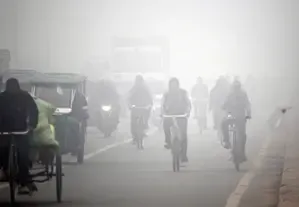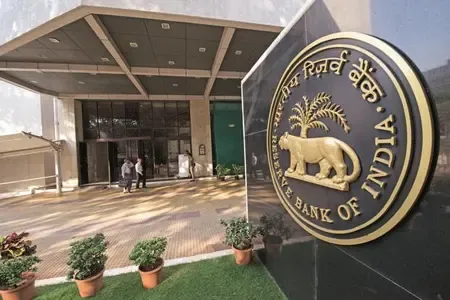Thick Fog Envelops Delhi-NCR, Train Operations Affected

Synopsis
Key Takeaways
- AQI in Delhi improved to 294.
- Dense fog caused delays in 27 trains.
- Minimum temperature rose to 10.3°C.
- Western disturbance helped improve air quality.
- Orange alert issued for upcoming fog conditions.
New Delhi, Jan 17 (NationPress) The air quality in Delhi improved notably on Friday morning, with the Air Quality Index (AQI) standing at 294, as reported by the Central Pollution Control Board (CPCB). Nevertheless, the national capital and its neighboring areas are still shrouded in heavy fog, resulting in disruptions to train services.
Reports indicate that 27 trains departing from various Delhi stations are delayed due to the low visibility attributed to the fog.
Alongside the enhanced air quality, Delhi also saw a temperature increase due to overcast conditions and light rain. The minimum temperature rose from 6 degrees Celsius to 10.3 degrees Celsius on Thursday, which is three degrees higher than the normal.
The maximum temperature also experienced a slight increase, moving from 18.1 degrees Celsius to 19.6 degrees Celsius.
This positive shift in air quality coincided with the lifting of Stage-IV of the Graded Response Action Plan (GRAP) on Thursday. A western disturbance that brought light rain, along with strong surface winds from late Wednesday to Thursday morning, significantly helped in dispersing pollutants and improving the air quality in the city.
The air quality enhancement was evident, with Delhi's AQI decreasing from 386 at 4 p.m. on Wednesday to 302 at the same hour on Thursday, remaining in the “very poor” category. By 8 p.m. on Thursday, it had further improved to 288, transitioning into the “poor” range.
Rainfall data from the Safdarjung weather station, which represents Delhi’s weather, indicated that 3.9 mm of rain fell in the 24 hours leading up to 8:30 a.m. on Thursday. Meanwhile, the Palam weather station recorded the highest rainfall at 10.1 mm, followed by 9.7 mm at the Ridge station.
Looking ahead, the India Meteorological Department (IMD) has predicted another western disturbance beginning January 18, which may bring light rain to northwest India on January 21. An orange alert has also been issued for dense to very dense fog on Friday and Saturday, which could worsen travel conditions in the capital.










